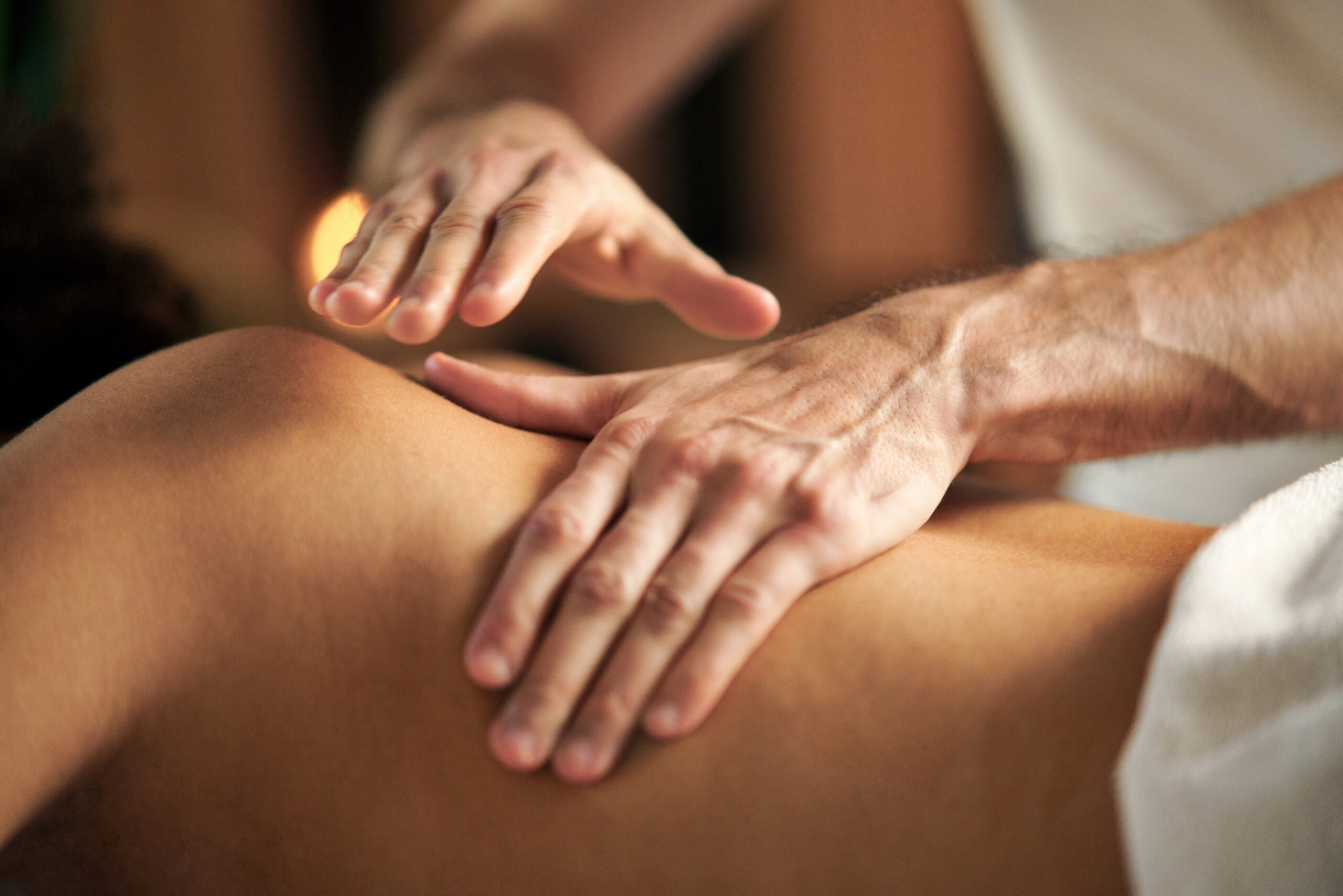
HOLISTIC APPROACHES TO CHRONIC PAIN
EMBRACING A NEW PATH TO WELLNESS
In a world where pain has become a common companion for many, the quest for relief can sometimes feel like an unending journey. Chronic pain, affecting millions globally, isn’t just a physical ailment—it’s a profound disruption to one’s life, altering daily routines, moods, and dreams. Yet, in the face of this challenge, a shift is happening. People are increasingly turning to holistic approaches, seeking not just to manage pain but to understand and address its root causes. If you’ve ever felt like you’ve exhausted all the conventional options, this exploration of holistic strategies might offer a refreshing new perspective.
At the heart of holistic pain management is the concept of the mind-body connection.

The Power of Mind-Body Connection
At the heart of holistic pain management is the concept of the mind-body connection. Chronic pain is not merely a symptom of physical injury or disease; it’s intertwined with emotional and mental states. Practices that nurture this connection, such as mindfulness and meditation, are gaining traction. Studies show that mindfulness can reduce the perception of pain by enhancing emotional regulation and altering the brain’s response to pain signals.
Imagine starting your day with a few minutes of mindful breathing. It’s not about eliminating pain but about shifting your relationship to it. By anchoring yourself in the present moment, you can create a space where pain’s grip feels less overpowering. Over time, this simple practice can build resilience and improve overall quality of life.
These practices emphasize slow, controlled movements and deep breathing, which help to improve flexibility, strength, and balance—all crucial for managing chronic pain.


The Art of Movement: Yoga and Tai Chi
When traditional exercise feels daunting due to pain, gentle movement practices can offer a lifeline. Yoga and Tai Chi, ancient practices with roots in holistic health, are particularly effective. These practices emphasize slow, controlled movements and deep breathing, which help to improve flexibility, strength, and balance—all crucial for managing chronic pain.
Consider yoga, not just as a series of poses but as a means to reconnect with your body. Each stretch and posture is an opportunity to listen to your body’s needs and limitations. Tai Chi, often described as “meditation in motion,” offers a rhythmic flow of movements that can enhance joint health and reduce pain without stressing the body.
Keeping a food diary to track symptoms can provide insights into how different foods impact your pain levels.

Nutrition: Food as Medicine
The saying “you are what you eat” takes on new meaning when it comes to managing chronic pain. An anti-inflammatory diet can play a pivotal role in alleviating discomfort. Incorporating foods rich in omega-3 fatty acids, like salmon and flaxseeds, or antioxidants, such as berries and leafy greens, can help combat inflammation.
Additionally, some individuals find relief in identifying and eliminating food sensitivities or allergies. Keeping a food diary to track symptoms can provide insights into how different foods impact your pain levels. Remember, nourishment is not just about what you eat but also about cultivating a balanced and healthful relationship with food.
Beyond diet and movement, a range of complementary therapies can support pain management.


The Role of Complementary Therapies
Beyond diet and movement, a range of complementary therapies can support pain management. Acupuncture, for instance, has been used for centuries in traditional Chinese medicine to restore balance and alleviate pain. By stimulating specific points on the body, acupuncture aims to improve energy flow and reduce discomfort.
Similarly, massage therapy can offer significant relief by targeting muscle tension and enhancing circulation. Techniques such as deep tissue or myofascial release can be particularly beneficial for those experiencing chronic muscle pain.
Engaging with support groups, both online and offline, can provide emotional support and practical advice.

Building a Supportive Environment
Chronic pain can feel isolating, but building a supportive network is crucial. Engaging with support groups, both online and offline, can provide emotional support and practical advice. Sharing experiences and learning from others who understand your struggles can be empowering and therapeutic.
Moreover, working with a multidisciplinary team of healthcare providers—such as physical therapists, nutritionists, and mental health professionals—can offer a more comprehensive approach to managing pain. This team can tailor a holistic plan to your unique needs and circumstances, ensuring that all aspects of your well-being are addressed.
Holistic approaches to chronic pain are not about replacing conventional treatments, but complementing them.

Embracing a New Path
Holistic approaches to chronic pain are not about replacing conventional treatments, but complementing them. By embracing these strategies, you’re taking an active role in your wellness journey. It’s about nurturing the intricate interplay between mind and body, exploring the benefits of gentle movement, and acknowledging the profound impact of nutrition and emotional support.
As you navigate this path, remember that managing chronic pain is a deeply personal journey. There is no one-size-fits-all solution, but there are many avenues to explore. By integrating holistic practices into your life, you may discover new ways to cope, heal, and reclaim joy despite the persistent challenges of pain.
In the quest for relief, the holistic approach offers not just a treatment plan, but a promise of renewed hope and possibility. So, take a deep breath, move with intention, nourish your body, and embrace the journey towards a more balanced and harmonious life. INSPIRE

More From INSPIRE Fall 2024 Issue

INSPIRE Magazine Cover Story: The Epitome Of Inspiration! New IPL Pro Adrienne Akinsete Is 68!
“…a healthy lifestyle can lead to profound changes, both physically and mentally. By sharing my story, I hope to inspire others to embark on their own journeys toward health and wellness, proving that it’s never too late to start living your best life.”

INSPIRE Magazine – Mindful Eating: How to Transform Your Relationship With Food
By cultivating awareness around our eating habits, we can transform our relationship with food from one of guilt and anxiety to one of joy and nourishment.

INSPIRE Magazine: What Our Spring 2024 Cover Girl IPL Pro Deanna Faulkner Is Up To Now
“You have to know how to tune out the negativity, not just from the outside but within your own mind. You have to have the drive to see it through to the end. Even when you are tired, and sore, and want to throw in the towel.”
More Health & Wellness

INSPIRE Magazine: HYDRATE – How Much Water Do You Need?
Water is life. It makes up about 60% of the human body, and every cell, tissue, and organ depends on it to function properly. But how much water do you actually need to drink each day?

SEAM Magazine: Mindful Beauty – How To Glow Inside & Out
Let’s get real—beauty isn’t just skin-deep anymore. These days, the most radiant women are embracing more than contour and collagen. They’re tapping into something deeper: mindfulness.
More From INSPIRE Magazine

INSPIRE Magazine – COVER STORY – New Mom & IPL Athlete Katy Stanton On Managing Anxiety & Mental Health
“…at 26, after the worst depressive state I had ever experienced, I realized if I did not get serious help, I would not live to see 27.”

INSPIRE Magazine – Embracing Body Positivity & Diversity In The Fitness Industry
This shift is not just a passing trend but a cultural revolution, driven by a growing recognition of the beauty and strength inherent in diversity. Embracing body positivity in the fitness industry isn’t just about changing perceptions. It’s about changing lives.

INSPIRE Magazine – Rhonda Flagstad’s Journey From Devastating Motorcycle Accident Back To The Stage
“One perspective was changing my mindset from, ‘I have to go to the gym.’ to ‘I GET to go to the gym today!’ I feel fortunate that my injuries healed and that I can still compete.”

